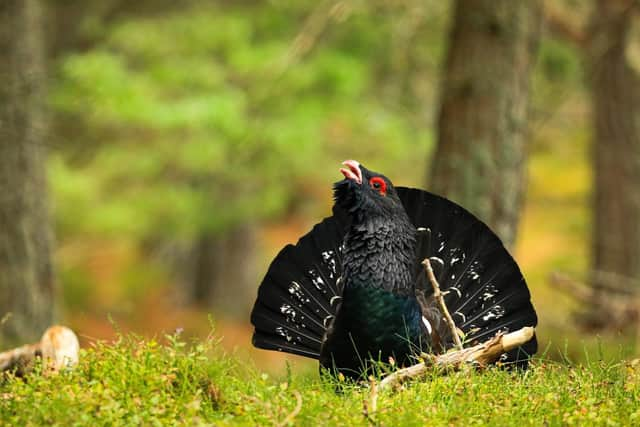Capercaillie Scotland: Orkney stoat control success prompts calls to control pine martens to help reverse capercaillie decline
A leading wildlife charity has accused the RSPB of double standards for controlling stoats on Orkney to protect ground-nesting birds, but not predators of the fast-declining capercaillie population on the mainland.
The Game and Wildlife Conservation Trust (GWCT) said action must be taken to control predators such as crows and foxes in Abernethy national nature reserve in the Cairngorms, which is home to what remains of Scotland’s capercaillie population. In 2020, GWCT figures said the population had fallen to just 304 adult birds.
Advertisement
Hide AdAdvertisement
Hide AdDespite its protected status, the trust said pine martens, which are known for preying on eggs and chicks, must also be controlled.


The calls come as the RSPB continues to lay traps on Orkney to control stoats, a non-native species that predate on ground-nesting birds. More than 5,000 stoats have been killed in six years in an eradication scheme backed by NatureScot.
Although some studies claim the pine marten is compounding the capercaillie population decline, the RSPB has no plans for their control.
The bird conservation charity is working on a diversionary feeding trial as an alternative method to lethal control, which it said is “showing early promise in helping the capercaillie.”
An RSPB spokesperson said: “There's a world of difference between eradicating an invasive non-native species on Orkney and removing a protected mammal on the mainland that has only recently recovered from historical persecution.”
Rory Kennedy, director of GWCT, however, pointed to NatureScot’s own scientific advisory committee (SAC) report that recommended lethal control of predators across the entire capercaillie range to prevent the bird’s population decline.
The report said: “It is likely that reductions in the numbers of predators (crows, foxes, pine martens and possibly badgers) would significantly improve the breeding success of capercaillie. Management initiatives aimed at removing predators can produce immediate results.”
Mr Kennedy said the Government agency also “freely admits we need to find an answer to the pine marten issue”.
Advertisement
Hide AdAdvertisement
Hide Ad“Predation control is a proven conservation tool, as demonstrated by the RSPB’s campaign in Orkney and elsewhere across the UK,” he said.
"With that in mind, it is bizarre that they do not support its use to protect the last of our capercaillie, especially when lethal control of fox and crow was a specific recommendation of the SAC report. NatureScot freely admit we need to find an answer to the pine marten issue so, until non-lethal options prove viable, lethal control needs to remain on the table.”
Mr Kennedy said GWCT has been working with a wildlife fertility control institute on the idea of contraceptive baits to limit pine marten populations. He pointed to ongoing trials in England in which a contraceptive in hazelnut paste is to be used to reduce the number of grey squirrels.
NatureScot said it was not actively considering contraception for pine martens.
A spokesperson for the Government agency said: “It’s clear that the capercaillie population in Scotland is extremely vulnerable. We are working with a wide range of stakeholders to determine what needs to be put in place for their survival. We recognise the urgency of the situation and the need to continue to focus efforts on partnership work to tackle threats to the species.”
Earlier this year it was widely reported capercaillie numbers were on the rise again. A Cairngorms Capercaillie Project survey found an increase of 19 lekking males this year compared to 2022.
But Mr Kennedy said the number of birds at lekking sites was not an accurate reflection of how the species was doing.
“Recent fluctuations in certain lek sites have been seized upon by some to imply a positive overall story,” he said. "This is irresponsible when the reality is, we are now down to around 300 birds and extinction is currently an inevitability.”
Comments
Want to join the conversation? Please or to comment on this article.
